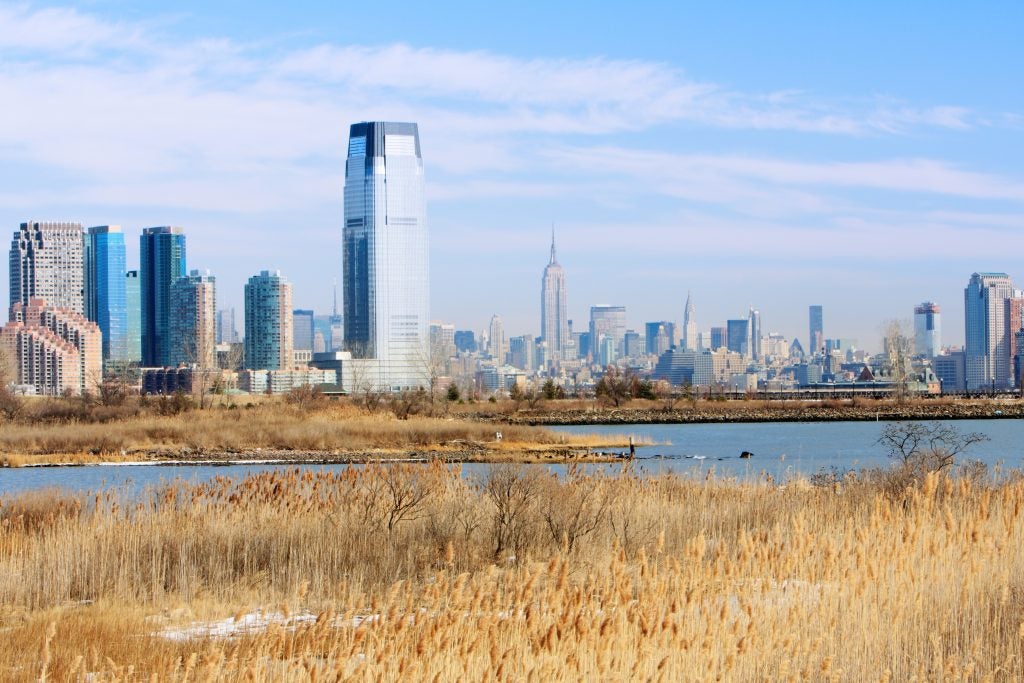The densely populated coastal regions of New York and New Jersey face serious flood threats as climate change, increased storm frequency and rising sea levels exacerbate vulnerability.
Without action, 2.9 million people and $2.1 trillion in assets in New York City and Newark, NJ, alone are at risk of flooding by 2070.
The U.S. Army Corps of Engineers plays a major role in assessing flood risk and identifying solutions to reduce it. However, to date, the Corps’ approach has not matched the scale and scope of flood threats to communities and vital infrastructure.
In light of last year’s Water Resources Development Act, the Corps must include implementation guidance to pursue a holistic approach in their upcoming New York-New Jersey Harbor and Tributaries Study (NYNJHATS).
Here are four ways the Corps can adequately address the region’s flood risk:
1. Advance solutions that address multiple flood risks.
There are three primary flood risks for coastal regions: storm surge, “blue sky” flooding or tidal flooding associated with sea level rise, and extreme precipitation events that cause river flooding.
To date, the Corps has maintained a sole focus on storm surge that will leave millions of people and billions of dollars in infrastructure in the region at high risk from unchecked flood risks, especially due to rising sea levels.
The Corps must work urgently to implement comprehensive flood protection solutions that address both individual and compounding flood threats.
By prioritizing equity and nature-based solutions, the Corps can better serve New York and New Jersey stakeholders, increase coastal resilience, and become a global leader in addressing flood threats. Share on X2. Prioritize natural solutions.
The limitations of traditional gray infrastructure have been well-documented, and many experts in both environmental management and governance recognize the untapped potential of nature and nature-based features as an effective method of flood control.
Since its inception, NYNJHATS has focused on large-scale grey infrastructure solutions, including sea walls and gates. These methods ignore multiple flood risks and can even exacerbate flood events in some instances.
WRDA endorsed nature-based solutions and the consideration of ecosystem services in cost-benefit analysis as priorities, and the Biden administration has advocated for nature-based infrastructure as a powerful tool to build coastal resilience. By taking advantage of solutions that harness the power of natural systems, the Corps can provide multiple, immediate benefits to this vulnerable region.

3. Center public needs and values in decision-making.
Residents of socially vulnerable communities that are exposed to flooding should have an active role in decision-making. The Corps must include methods to engage affected communities in the development of more equitable solutions for flood protection.
The Corps should also seek to better understand the needs and values of communities in which they operate to incorporate these values into project design and selection.
4. Increase equity by rethinking cost-benefit analyses.
Cost-benefit analysis is a common method for selecting coastal resilience projects and priorities, but current methodologies can perpetuate existing income inequality.
Risk-reduction projects in the region generally evaluate properties based on resale values. This favors affluent, commonly less-populated communities with higher property values. Additional metrics must be developed to remove this systematic inequity in decision-making.
In addition, low-income properties should be assessed based on the availability of affordable housing rather than resale value.
Low-income communities lack the availability of affordable housing or the resources to change residence with ease, therefore they must be prioritized among the most impacted groups. An updated approach to cost-benefit analysis is one way to recognize that priority.
NYNJHATS has laid some import groundwork for building resilience in the New York-New Jersey coastal region. By prioritizing equity and nature-based solutions, the Corps can better serve local stakeholders, increase coastal resilience to current and future flood risks, and become a global leader in addressing flood threats with innovation.









